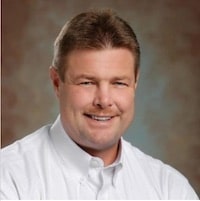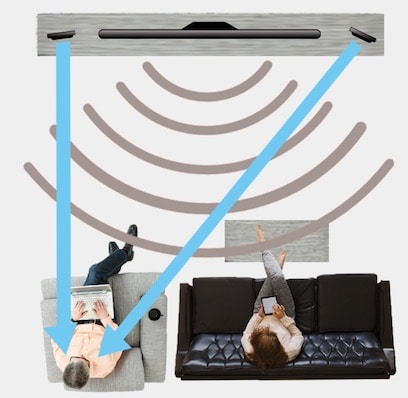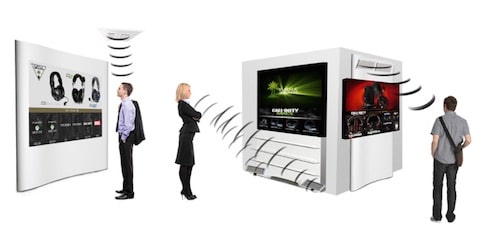
Rodney Schutt
Senior VP & General Manger at Turtle Beach
HyperSound
Preface: New entries into the hearing rehabilitation discipline occur on a regular basis. Many are improvements to existing applications/systems, and those who are hearing impaired and/or work with them are grateful for improvements.
Occasionally, something “different” is introduced, and when from outside the “customary” channels, it exposes the discipline of hearing to alternate marketing opportunities. Such is the HyperSound Clear™ 500P demonstrated at this year’s AAA meeting in April.
Origin – Turtle Beach Corporation
Turtle Beach Corporation is known for designing leading-edge audio products for the consumer, commercial, and health-care markets. Under the Turtle Beach brand (www.turtlebeach.com), the Company markets a wide selection of quality gaming headsets catering to a variety of gamers’ needs and budgets, for use with video game consoles, as well as for personal computers and mobile/tablet devices.
For those operating in hearing health care, nothing mentioned so far is anything to get excited about. But now, under its HyperSound® brand, the Company is marketing pioneering directed-audio solutions that have applications in digital signage and kiosks, consumer electronics and, of interest to hearing care professionals, a product called HyperSound Clear. And, it is being managed by an individual who has earned his wings in the hearing aid industry.
To find out more about what this product is, HHTM (Hearing Health and Technology Matters) interviewed Rodney Schutt, Senior Vice President and General Manager.
Interview (telecom, 9th of September, 2015)
Q. Can you provide a short synopsis of your background?
A. I started my education at Eastern Illinois University studying computer science and playing baseball. After a pitching injury I transferred to DeVry University in Chicago and graduated with an AAS degree in electrical engineering. Upon graduation I immediately went to work for GE Healthcare and soon thereafter enrolled at Marian University in Business Administration and Management. I spent 18+ years at GE Healthcare, holding a number of service, sales, and senior management positions. This was followed by three years at Smith & Nephew Orthopedics as VP of Global Commercial Operations and VP Business Development, Asia. I then became COO / CEO of Luminetx, CEO of ASPYRA, an Electronic Medical Records Company, and then President and CEO of Unitron, Inc. Thereafter I became President of Widex USA.
Q. What was it that led to your move?
A. I thought that running Widex would be my last stop; lots of opportunity in Widex, and everything was looking great. Then I received a call from an executive recruiter representing Turtle Beach. Several exchanges occurred, however I was pretty determined to stay at Widex. Finally, an in-person meeting took place with Turtle Beach CEO Juergen Stark, who demonstrated the HyperSound technology to me. This was the most amazing technology I had ever experienced, and after much deliberation, I did the smart thing and left the decision up to my wife, and we moved to San Diego so I could run the HyperSound business.
Q. So, what is HyperSound?
 A. It is a beam forming technology designed to allow hearing-impaired persons to have an improved TV listening experience without disturbing family members, and without the need to wear headphones. The system essentially consists of two HyperSound speakers arranged to have their ultrasonic signals focused on the spot where a listener sits. By beaming sound with precision, similar to a flashlight, sound within the beam mainly reaches the intended user. Others listening to the TV hear it in their normal manner. This tightly-directed sound beam improves listening understanding because ambient sound falls outside the beam. This combination allows for less volume to deliver sound where needed. The listener has a remote control to manage the volume level.
A. It is a beam forming technology designed to allow hearing-impaired persons to have an improved TV listening experience without disturbing family members, and without the need to wear headphones. The system essentially consists of two HyperSound speakers arranged to have their ultrasonic signals focused on the spot where a listener sits. By beaming sound with precision, similar to a flashlight, sound within the beam mainly reaches the intended user. Others listening to the TV hear it in their normal manner. This tightly-directed sound beam improves listening understanding because ambient sound falls outside the beam. This combination allows for less volume to deliver sound where needed. The listener has a remote control to manage the volume level.
Q. Tell us what is so amazing that caused you to even consider such a dramatic move?
A. The most amazing event was the actual demonstration. As a broken down, old engineer/geeky techno guy by nature (even though this hasn’t been my profession for years), I had an experience that “words cannot describe.” When I sat in the beam, it literally felt like the sound was in my head because when delivering the beam directly to the eardrum, the inverse square law does not apply. What I mean by that is the volume of the TV through HyperSound speakers is not consistent with how we are accustomed to hearing normal audio at a typical distance, like in your family room. Because of the way HyperSound Clear works, it seems like you are closer to the TV, when in reality you are actually several feet away from the TV and hearing it at a comfortable volume when in the HyperSound beam. The experience of listening to TV with HyperSound Clear was that of either having headphones on or that the sound was in my head. This was weird. There was no directional “feel.” So, I was blown away first by the technology, and second, by the potential applications.
Q. OK. Can you tell us what you see as some of the other potential applications?
 A. I will explain one application as HyperSound has two divisions, Commercial Pro-Audio and Healthcare. I am sure that you have been to retail settings where large video screens are lined up side by side for display, showing a series of different programs / advertisements. However, the audio is turned off. The reason is because the sound from the video devices all playing at the same time creates sound bleed, and drives employees, and viewers, crazy. Potential purchasers do not have an opportunity to experience the audio. However, the ability to beam audio from those retail displays, kiosks or digital signage would allow a person standing 3 feet from the video to hear nothing until he/she steps into the beam. For example, a Best Buy could have a number of kiosks in each store that allow this experience. Keep in mind, this commercial application is a completely different generation of HyperSound product focused on retail applications.
A. I will explain one application as HyperSound has two divisions, Commercial Pro-Audio and Healthcare. I am sure that you have been to retail settings where large video screens are lined up side by side for display, showing a series of different programs / advertisements. However, the audio is turned off. The reason is because the sound from the video devices all playing at the same time creates sound bleed, and drives employees, and viewers, crazy. Potential purchasers do not have an opportunity to experience the audio. However, the ability to beam audio from those retail displays, kiosks or digital signage would allow a person standing 3 feet from the video to hear nothing until he/she steps into the beam. For example, a Best Buy could have a number of kiosks in each store that allow this experience. Keep in mind, this commercial application is a completely different generation of HyperSound product focused on retail applications.
Q. Does a person just connect the amplifier to the TV output in a normal way?
A. The amplifier can be connected to a TV through the audio output, but the amplifier can also be connected to other boxes (e.g., cable).
Q. Are there any clinical results demonstrating the practical application of HyperSound?
A. We have been conducting clinical studies in 30 sites across the US since January. We recently published an article in the October issue of Hearing Review that examines patient preference for HyperSound Clear and the results were extremely favorable. When it comes to demonstrating HyperSound Clear for patients, we have found through our research that a real sweet spot is in the fitting room because it does not take up much space. We have also learned that many hearing aid users are happiest with this type of TV listening because other solutions have proved to be inadequate. The amplifier footprint is a little smaller than a normal cable box. The emitters (look like speakers) are about 6” wide x 11” tall.
Q. How would a hearing care professional utilize this in their practice?
A. It is very important not to interrupt or change work flow in a busy practice. The amplifier for HyperSound Clear is similar to a hearing aid and can be programmed in NOAH as fitted hearing aids are. Licensing occurred with HIMSA in February and we are awaiting final paperwork. We believe that the HyperSound Clear will become a best friend to audiologists/dispensers because it appeals to those who have a mild/moderate hearing loss but don’t want to purchase hearing aids. This can be a great transitioning device. Also, when you consider the number one leisure activity for adults over the age of 55 is watching TV, it really expands the reach of hearing care professionals. With HyperSound Clear they can offer a device that addresses a high priority listening situation where many people with very mild hearing loss, even normal hearing struggle, or, in the case of patients with more significant hearing loss, something that complements their current use of hearing aids.
Q. How do you envision the HyperSound Clear being marketed to hearing professionals?
A. We already have agreements in place with AHAA, AudConnect, AMG, ARG, Fuel Medical Group, and others – in other words, with 80% of the buying groups and traditional hearing health channels in industry. Approximately two hundred practices have already signed up. Marketing is only through traditional hearing healthcare channels (no big box). The system is very easy to hook up, but why leave anything to chance – so, at initial launch, we have partnered with Caption Call for white glove installation for a limited time for units sold in the U.S. The purchaser leaves with an amplifier, two speakers/emitters, all cables to hook up, table top and floor stands. They carry it home out of the office, after it has been programmed by the audiologist/dispenser and it takes less than two minutes to program!!! The HyperSound Clear cannot be purchased online. The return policy is 14 days. The fitting room either has a monitor or PC for demonstration, which is through a loop playing on the computer screen. The buy-in offer is if you purchase 5 you get your 6th free (demo then is free). Turtle Beach comes to your office to install the demo and remain for the “majority of first day” and walk through several patients in demo process.
Q. With essentially every product dispensers currently have, upgrades are a normal part of business. How will these be managed?
A. The amplifier box has the ability to upgrade firmware and software, and that will be performed in the office.
Q. How can hearing professionals learn more?
A. Go to www.hypersoundhearing.com and sign up for the Innovators program.






